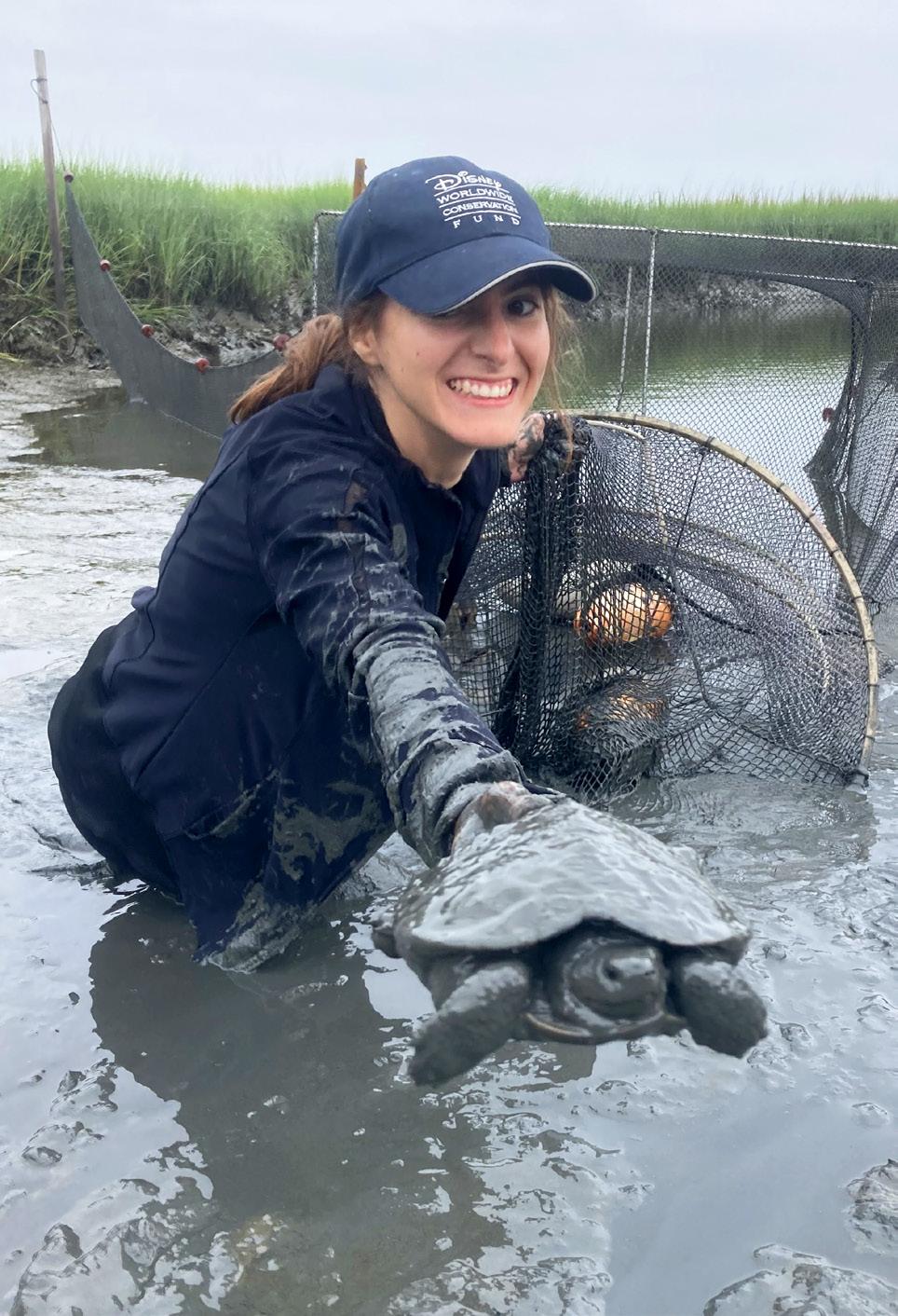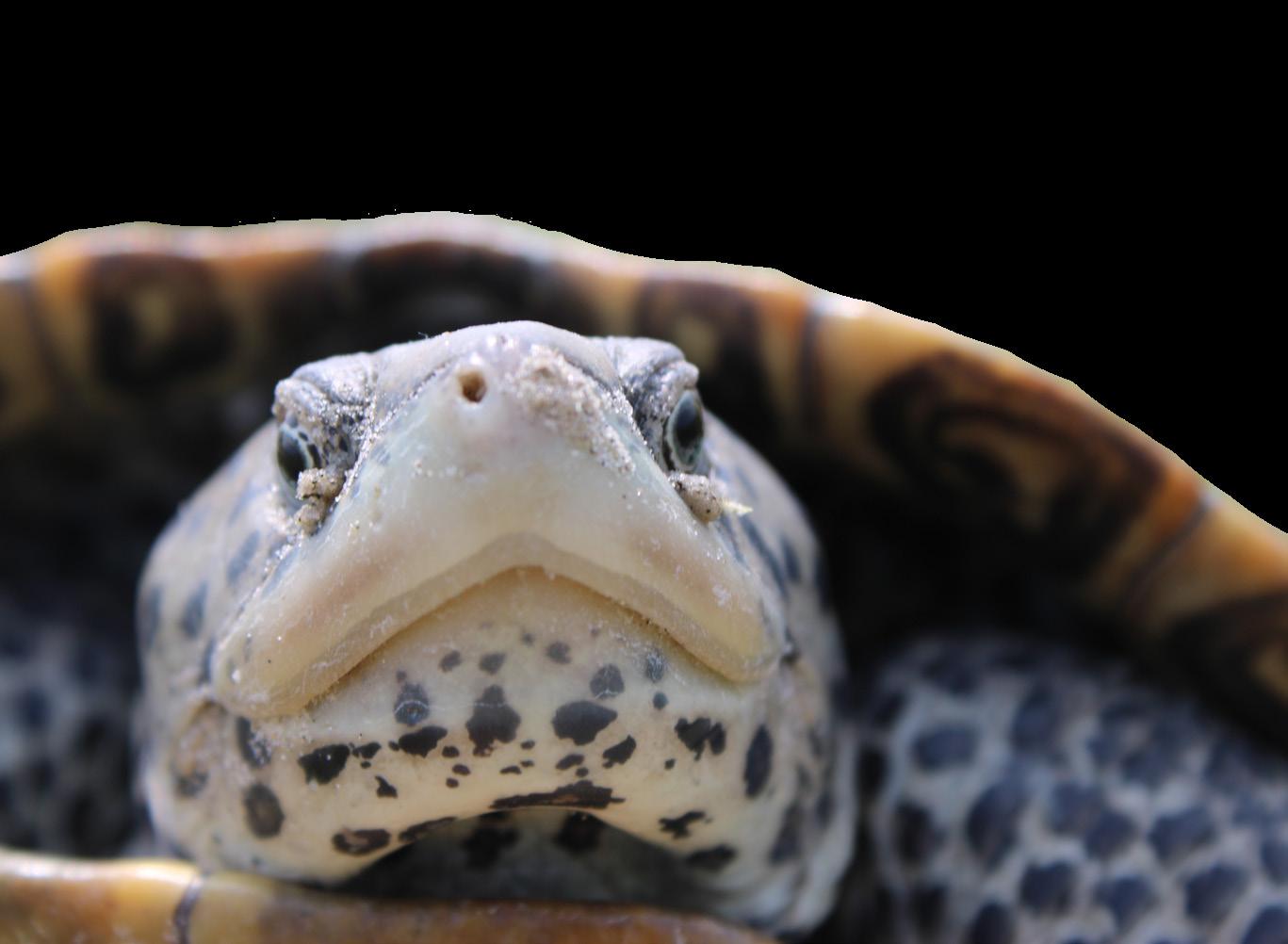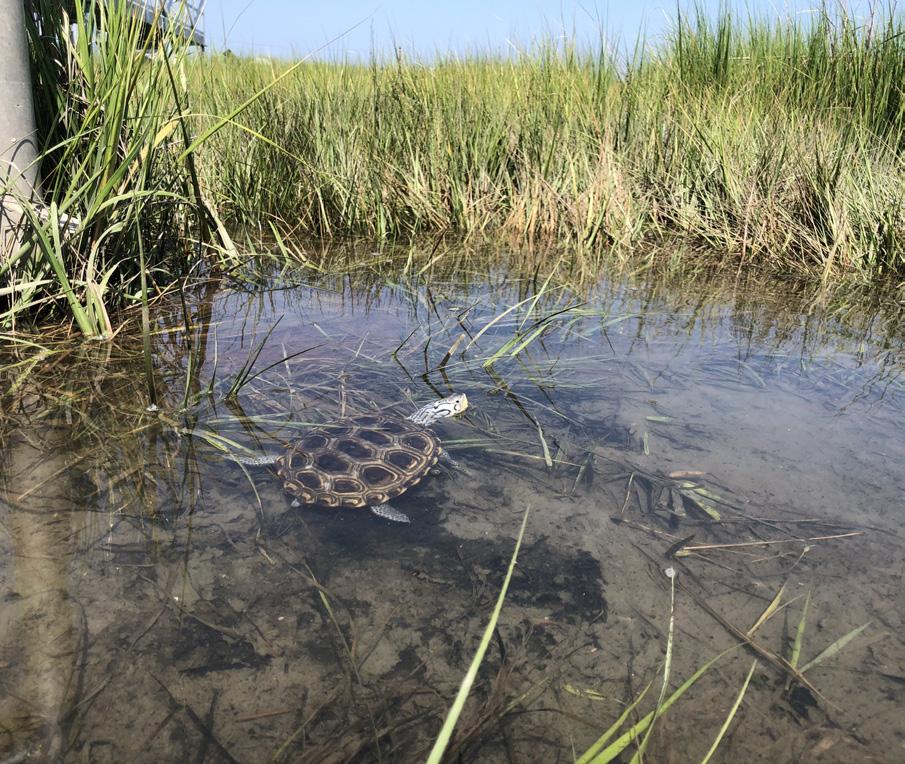




By Brian Williamson of The Wetlands Institute

If you frequent shore communities of southern New Jersey in the summer months, you have likely seen a northern diamondback terrapin – either a hatchling scrambling to seek refuge in the nearest vegetation, a female hastily crossing a road to nest, or a smaller-bodied male basking lazily on the bank of a tidal creek.
These reptiles live their entire lives in and around salt marsh ecosystems, uniquely adapted for an existence in brackish water. No other reptile in our region, and no other turtle in North America, is capable of lifetime residence in salt marshes. Not only are these turtles a unique part of our local biodiversity, but they are also an extremely important species in their salt marsh ecosystems. Studies have suggested terrapins may keep populations of marsh grazers in check, helping to ensure the continued health of the salt marsh ecosystems they inhabit.

Unfortunately, however, this iconic and important species faces growing threats to its continued existence in New Jersey and beyond. Countless terrapins drown each year as bycatch in enclosed crab pots, and impacts from this often-unseen threat have led to local declines and population collapse in parts of their range. The loss of terrapins from bycatch is likely to be particularly high along Delaware Bay, where crab shing activity is greatest in New Jersey, but very little is known about the status of terrapin populations in this region.
Coastal development and sea-level rise continue to reduce the availability of marsh habitats and high-quality nesting areas throughout the state. And what nesting habitat remains is often near heavily tra cked roadways, leading to road mortality which can also have large impacts on terrapin populations. While e orts have
begun to construct arti cial nesting habitats benecially using dredged materials that are more resilient to sea level rise and farther from roads, questions about the e ectiveness of these arti cial habitats remain.
Additionally, where terrapins brumate (the reptilian equivalent of hibernation) is poorly understood. Resolving uncertainties in our knowledge of terrapin movements and habitat preferences will help us continue to support best practices for terrapin conservation and further guide restoration e orts.
To help ll important gaps in understanding of the spatial distribution of diamondback terrapins to aid in their conservation, The Wetlands Institute – which has focused on terrapin research and conservation in southern New Jersey since 1989 – received funding from the Wildlife Management Institute’s Northeast Regional Conservation Needs grant program to track terrapin movements for two years along the Delaware Bay shore and in salt marshes near Seven Mile Beach.
For this project, we will be trialing the use of cellular GPS transmitters, which collect GPS points and transmit them remotely via cell signal. We hope these tools allow us to learn about terrapin movements in difcult-to-reach locations. Our general goals for this work are to understand habitat selection and movements in both male and female diamondback terrapins, but we have additional questions speci c to our two study areas.
Along the Delaware Bay shore, where terrapins are most heavily threatened with bycatch in crab pots, we are seeking to understand how terrapins use habitat to help inform management decisions related to crabbing and bycatch issues. We hope to learn how far terrapins are moving into the bay, how far they range up creeks, and if there is seasonality to their use of these habitats so that we can better understand the potential overlap of crab shing activity and terrapin habitat use. continued on page 110




Little is known of terrapin habitat use in the Delaware Bay in general, so in addition to learning more about their use of creek and open bay habitats, we hope to identify nesting habitats along the Delaware Bay, as well as potential brumation locations. Our work along the Delaware Bay will begin to ll a long-standing gap in the scienti c community’s knowledge of terrapins in New Jersey and help ensure these understudied populations can persist and coexist with New Jersey’s important blue crab shery.
Meanwhile, for Seven Mile Beach, our questions and goals are somewhat di erent. We have studied terrapins in the island’s vicinity for more than 30 years. However, there is still much more to learn. Seven Mile Beach is an area where signi cant restoration work to increase resil-


ience of the marsh to sea-level rise is ongoing alongside frequent dredging activity. Two elevated nesting habitats have been constructed in this area using dredged material. GPS telemetry will allow us to monitor how terrapins may be using these sites.
Additionally, tracking the movements of terrapins near Seven Mile Island will help inform planned restoration of marsh habitat by allowing us to understand where in the marsh terrapins prefer to spend their time and how they are using restored areas. Finally, brumation is poorly understood in terrapins throughout New Jersey, and understanding how and where these turtles brumate will help us evaluate habitat preferences and work to reduce risks to overwintering terrapins. Information from this study will help researchers throughout





the region maximize the bene ts of salt marsh restoration in ways that enhance the bene ts to diamondback terrapins. Balancing the need for salt marsh restoration while working to ensure that risks to terrapins is minimized is an important focus of this research.
Overall, this project represents an important next step in our long-running terrapin research and conservation program. We are excited for the opportunity to continue to conduct cutting-edge research on such an iconic and important species of our local marsh ecosystems and contribute to our growing understanding of their habitats.
However, it is important to remember that we all have a role we can play in protecting terrapins and their habitats. You can do your part to protect terrapins by carefully and safely helping them cross roadways in the direction they are headed; placing any hatchlings found in the
open in the nearest tall vegetation so they can better hide from predators; never taking terrapins from the wild as pets; and, if you sh for crabs, checking traps regularly and using bycatch reduction devices on all enclosed crab traps. If you have questions or you would like to get more directly involved in conservation, please contact The Wetlands Institute to learn about terrapins and how you can volunteer to help our reptilian neighbors.
All work with terrapins is done by trained sta under permits from NJ Fish and Wildlife. Partial funding for this program is supported by a grant/cooperative agreement from the U.S. Department of the Interior, Fish and Wildlife Service. The grant and associated conservation activities are done to support implementation of a priority action of the State Wildlife Action Plans from members of the Northeast Association of Fish and Wildlife Agencies.





































